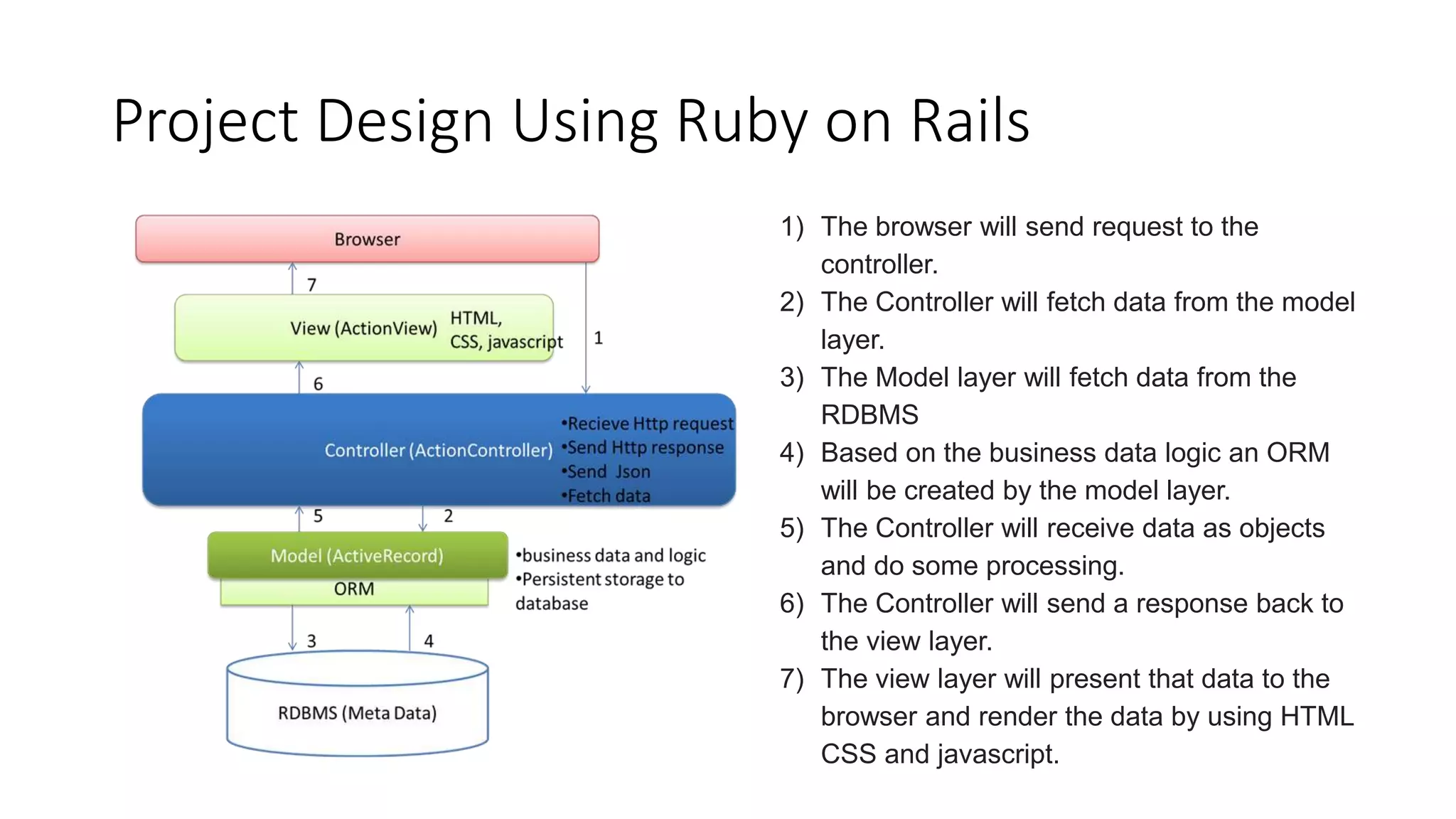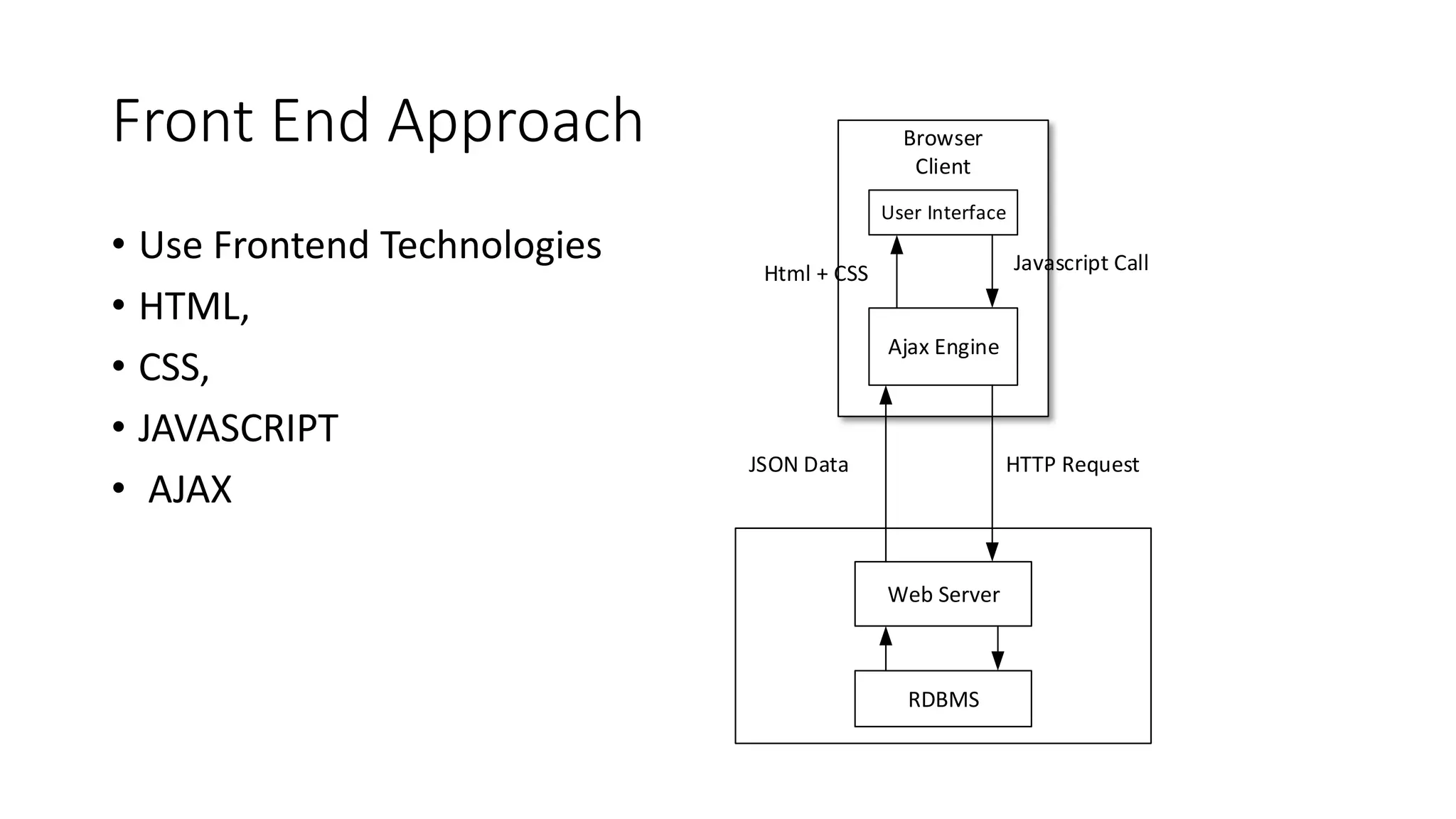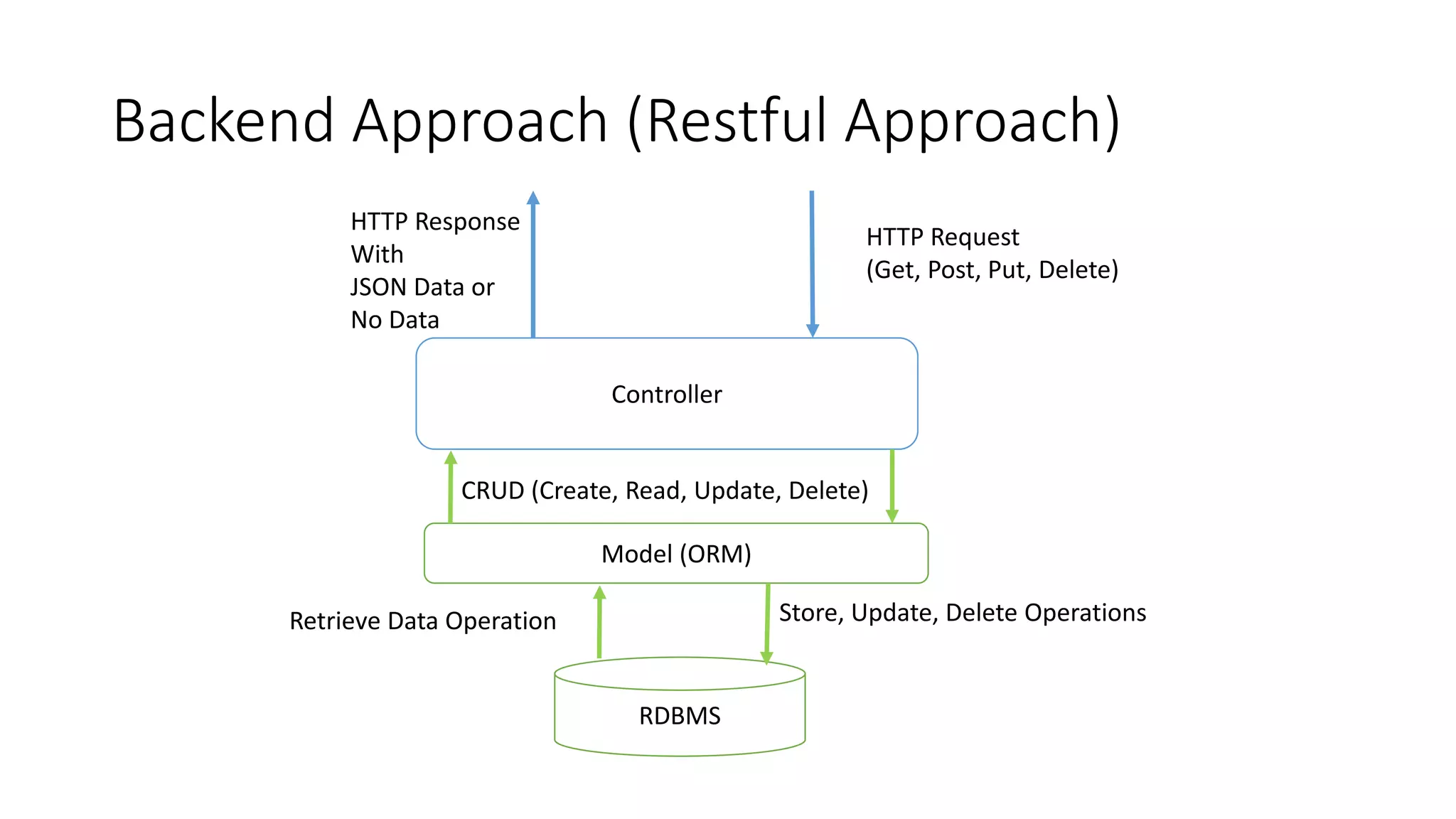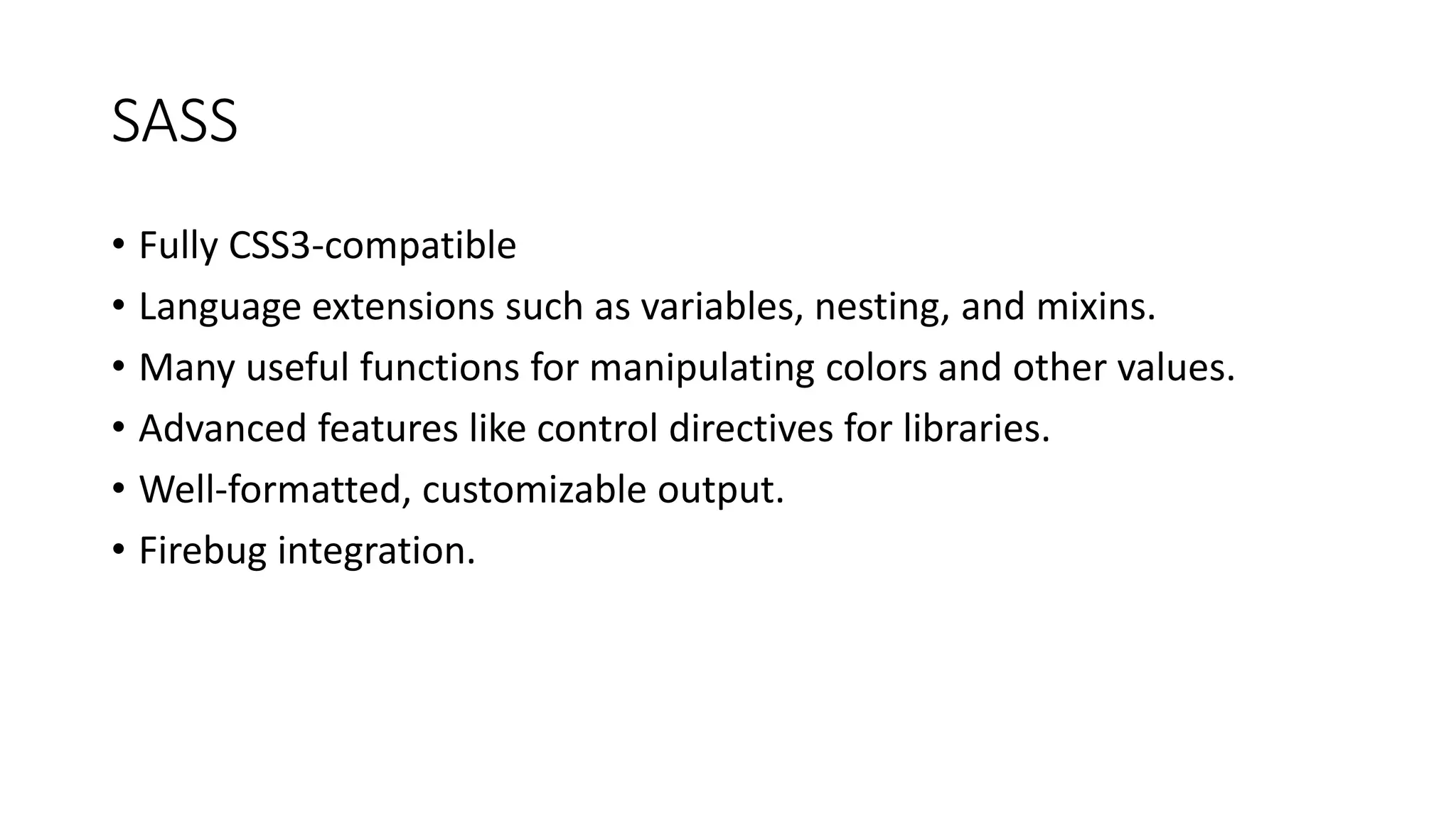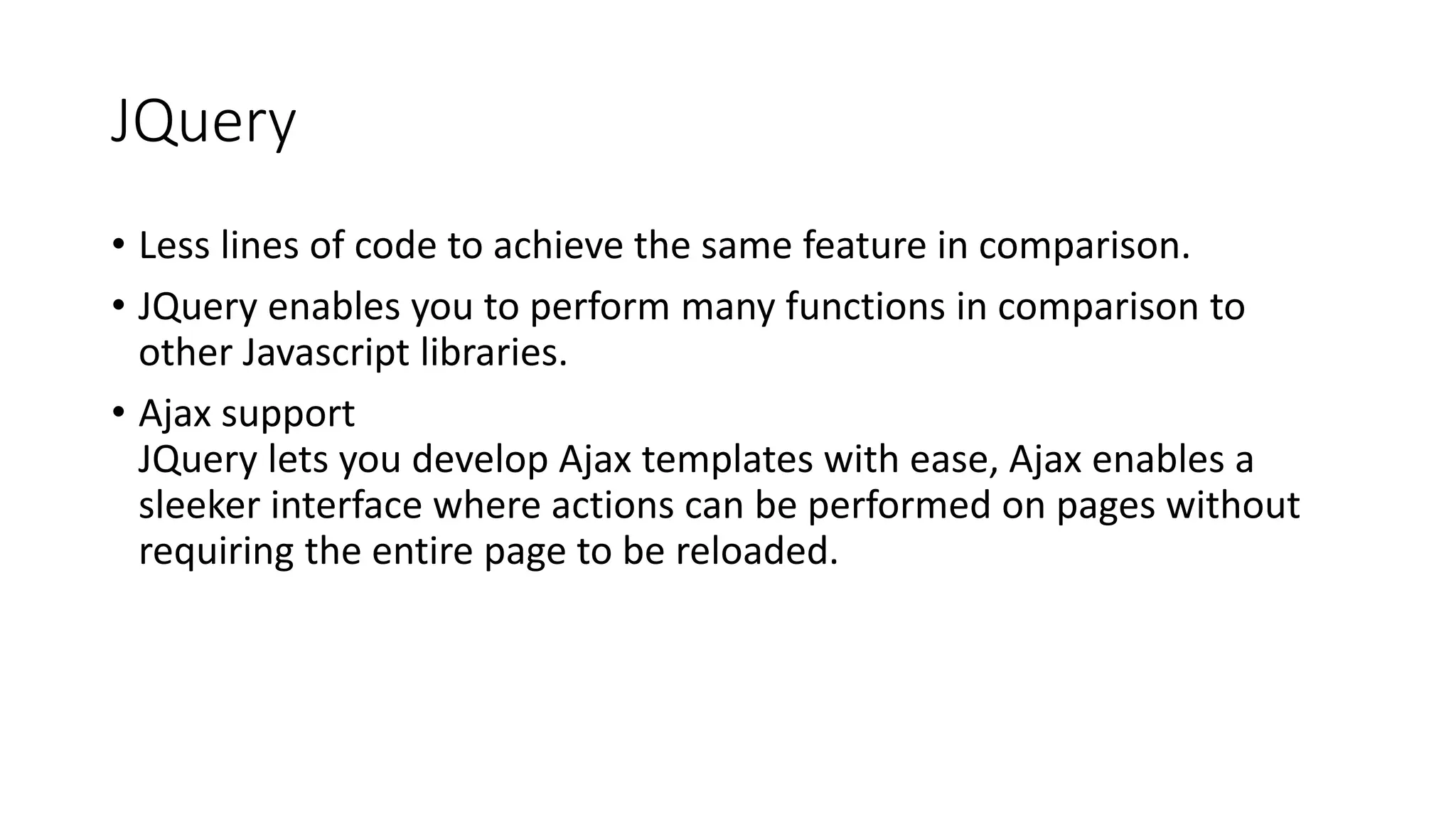The document describes the basic workflow of a project designed using Ruby on Rails. It involves:
1) A browser sending a request to the controller
2) The controller fetching data from the model layer
3) The model layer fetching data from the database
4) The model layer creating an ORM based on business logic
5) The controller processing the data and sending a response to the view layer
6) The view layer presenting the data to the browser through HTML, CSS, and JavaScript.
